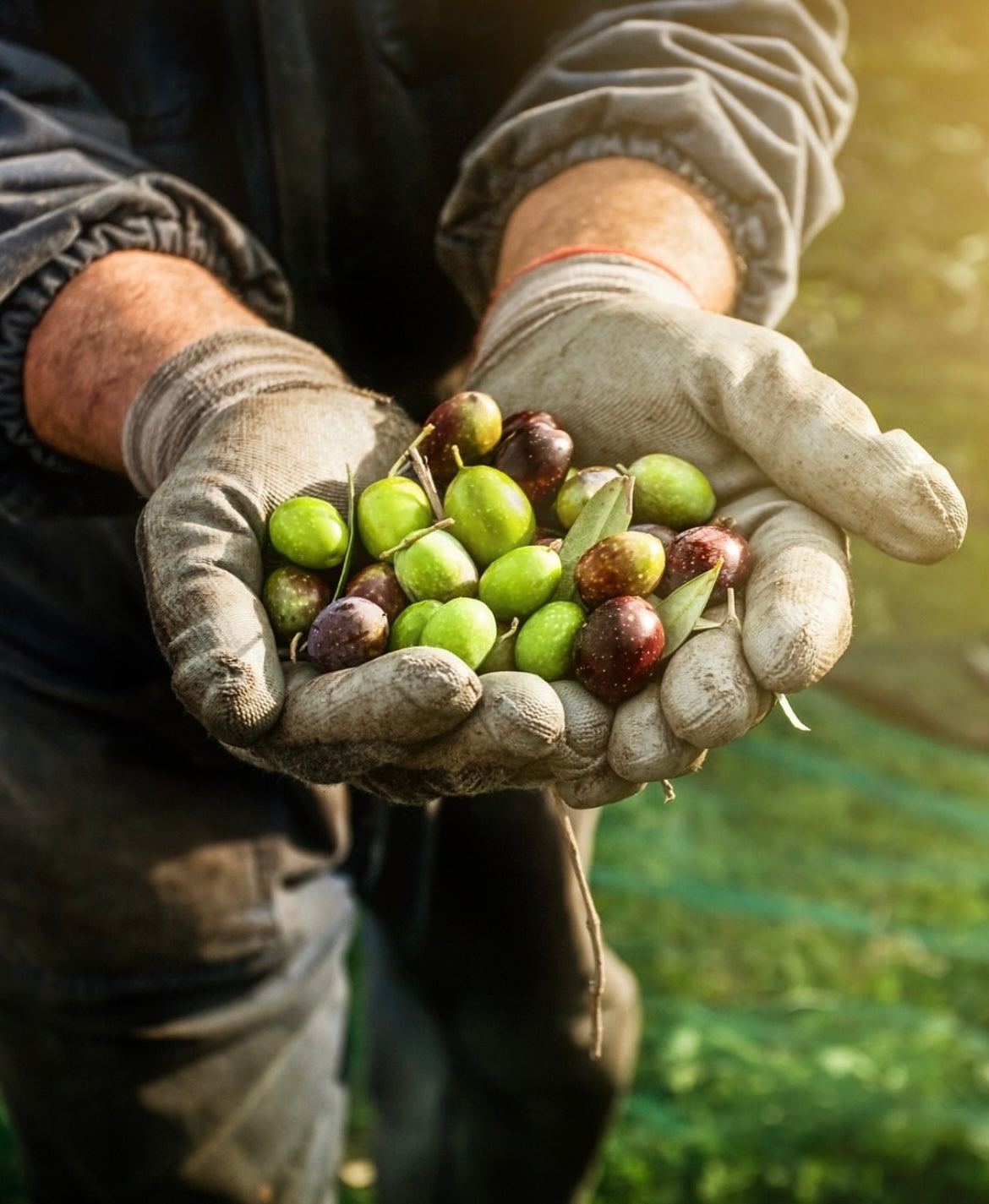
Producing Olive Oil – The Liquid Gold
Olive oil is an essential component of the Mediterranean diet, offering not only its intense flavor but also numerous healthy ingredients. Whether used for cooking and baking, as salad dressings, in sauces and dips, or for skincare and haircare – olive oil is a versatile food item and is commonly consumed in this country. It's a pure natural product often referred to as "liquid gold" due to its properties and health benefits. But how is olive oil actually produced?
The Production of Olive Oil – From Harvest to Packaging
Having just discussed the benefits and versatility of olive oil, it's time to delve into how this miraculous product is made – from harvesting the olives to the final packaging of the olive oil. Below, we outline each step of our olive oil production process:
1. Harvesting & Transporting the Olives
The oil extraction process begins with harvesting olives at their optimal ripeness. The best time for this is between autumn and winter, depending on the olive variety and the desired character of the olive oil. Harvesting can be done manually by hand or mechanically, such as using shaking machines. Since the harvested olives are very Since harvested olives are sensitive and their intense aroma diminishes quickly, they should ideally be transported to the olive mill on the same day.
2. Washing, Cleaning & Removing Leaves
In the second step, the olives are washed and freed from small leaves, branches, and dirt. Modern technologies with sensors ensure efficient cleaning while preserving the quality of the product.
3. Crushing the Olives
The olives are then crushed along with the pits to obtain a uniform mass of pulp, crushed pits, oil, and water with the correct particle size. The aim of this process is to release the small oil particles inside the fruit.
4. Beating the Mash
After crushing, the mash is beaten to facilitate the release of the oil. This physical process separates the solid and liquid components, making it easier to separate water and oil.
5. Centrifugation & Oil Extraction
The resulting paste is fed into a centrifuge, which separates oil, water, and pomace due to different densities. The temperature is controlled during this process to preserve the oil's special characteristics.
6. Storage, Preservation & Packaging of the Oil
In the final step, the oil is stored in stainless steel tanks at a constant temperature to protect it from light and odors. During this time, the oil develops intense flavor notes and transforms into "liquid gold." Finally, the pure olive oil is bottled in bottles, cans, containers, coated cardboard, or other airtight containers.
How many olives are needed to produce 1 liter of oil?
The production process of olive oil is no simple matter; quite the opposite. Now that you know how olive oil is made, you can better understand the various phases as well as the labor and time involved in producing this exceptional product. Depending on the olive variety, 5 to 10 kilograms of olives are required to produce 1 liter of olive oil. On average, a single olive tree can yield between 50 and 70 kilograms of olives. In turn, this means approximately 5 to 10 liters of olive oil per tree.
